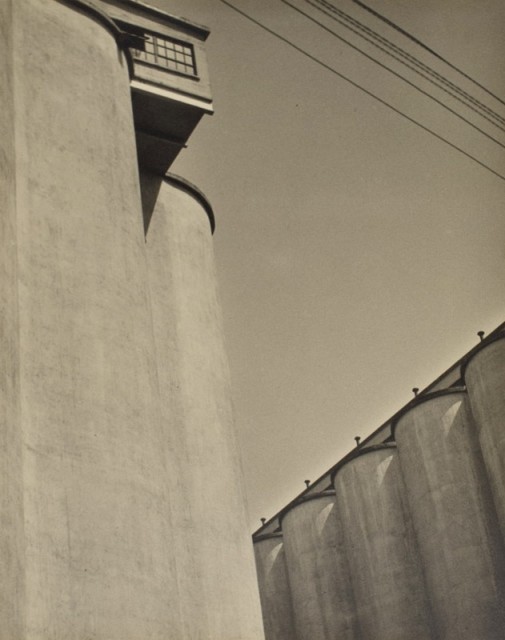CANADIAN MODERNISM
A Group Exhibition Featuring John Vanderpant & Contemporaries
Opening Reception: June 25, 5pm-8pm
Exhibition Dates: June 26 – September 12, 2015
This exhibition displays vintage prints made by Canadian photographers in the early and mid 20th century, a time when photography was mostly relegated to international salon exhibitions and prize medals were compensation for the lack of a market. In the early part of the medium’s history, photographers mimicked conventions in painting to promote acceptance of photography as a “true art”. By the outbreak of WWI, Americans, such as Paul Strand and Alfred Stieglitz, spearheaded a movement towards straight photography, but pictorial traditions remained influential in photographic circles through the 1950s.
John Vanderpant (b. Jan van der Pant in Alkmaar, Netherlands, January 11, 1884; d. Vancouver, BC, July 24, 1939) was a Dutch photojournalist who immigrated to Canada in 1911 and opened a studio in Okotoks, Alberta. After WWI he moved to British Columbia, eventually locating his portrait studio in Vancouver. His distinctive style eschewed popular photographic trickery and emphasized light and form. He quickly achieved acclaim, won awards, and his solo exhibitions toured the United States, Great Britain, and Europe. A fellow of the Royal Photographic Society of Great Britain, he also wrote and lectured widely. In 1926, with Harold Mortimer-Lamb, he opened a gallery on Robson Street. A year later he continued on his own and the building became a focal point for innovation in music, painting, and photography. In 1976, Charles Hill published a catalogue of Vanderpant’s work and curated a solo show for the National Gallery; and in 1995 Cheryl Shalloum published Underlying Vibrations: The Photography and Life of John Vanderpant (Horsdal & Schubart).
Harry Waddle (b. Port Dover, Ontario, February 28, 1915; d. Port Dover, Ontario, 2006) was born to an aspiring painter, Daisy (nee Kindree), and his father, Edmon, who was a professional photographer credited with many of the postcard pictures of Port Dover and all the family portraits in the area. As a young child he won a camera by saving lettered cards from chocolate bar wrappers. Following his return from the R.C.A.F. after World War II, Harry picked up his association with the Hamilton Camera Club and worked his way "through the chairs" to become president. His exhibition résumé offers insight into activities of top photographers working at this time. Waddle’s work began to win acclaim at the Hamilton Camera Club's monthly judging, and he was awarded the bronze medal for “best all-around group” of photographs for the year 1946. His portrait of his daughter, Mary, entitled "Mischief", won Print-of-the-Year in 1947; and his photograph of the sailing vessel Orenda moored in Port Dover harbour, captured Picture-of-the-Year honours for 1948 at the 15th annual Canadian Salon of Photography.
Having achieved success in Canada, he decided to try his hand at International Exhibitions and his prints were accepted worldwide. In 1951, he became an Associate of the Photographic Society of America (A.P.S.A.), and in 1952, he was an associate of the Royal Photographic Society of Great Britain (A.R.P.S.) where he later became a life member. He reached the pinnacle, in December 1954, when the Photographic Society of America presented him the Award of Merit as a 5-Star Exhibitor for his 1316 total acceptances of 129 different prints in recognized exhibitions. The prize was one of only seven in the world at that time. Waddle was asked to judge many exhibitions in Toronto, Edmonton, and the 17th Kodak International Salon in Rochester. He was asked to exhibit a one-person show at Glenhyrst by the Brantford Camera Club, and was honoured with a solo exhibition at the Massachusetts Institute of Technology. After reaching the top, and finding costs constantly increasing, Waddle decided to call it quits and concentrated on his family, other pastimes, and running Waddle's Variety Department Store in Port Dover, founded by his parents.
Rex Frost (b. London, England, 1897; d. Toronto, Ontario, 1968) immigrated to Canada after serving in the Imperial Forces during WWI. Starting in 1927 he was a revered radio host of several shows over a 35 year career with CFRB, including Canadian Farm Market Broadcast which he initiated. In addition to hosting a radio show devoted to photography, he was an avid photographer himself. Frost also wrote for numerous magazines, as well as a weekly column in the Globe and Mail called “Taking Photographs”. He was the president of the Toronto Camera Club, and also served for five years as the Canadian Director of the Photographic Society of America who honoured him with their Fellowship Award.
In addition to displays of work by those mentioned above, this exhibition also includes photographs made by these Canadian photographers:
Jessie Tarbox Beals; Jack Bunting; E. Haanel Cassidy; Otto Eaton; Johan Helders; E.J. Hessin; J.H. Mackay; Allan Sangster; William Gordon Shields; and Charles Devenish Woodley.

